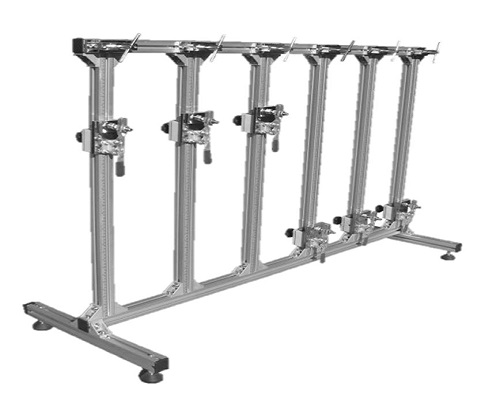
NewsInformation Center
Standard Test Methods for Stretch Properties of Fabrics Woven from Stretch Yarns
2023/10/27
Testing of the elastic properties of woven fabrics with elastic yarns is usually carried out using a range of international and national standards that define the measurement of fibre elasticity and recovery. Typical test methods include ASTM D2594 (Elastic properties of woven and knitted fabrics) and typical ISO or DIN standards.
1. ASTM D2594:
This ASTM standard method is applicable to the measurement of elongation and resilience properties of fabrics. It uses a constant rate tensile testing machine to test the tensile properties of fabrics. This method evaluates a fabric's elongation, breaking strength, and ability to return to its original condition after stretching.
2. ASTM D5035:
This ASTM standard method is used to measure the tensile and resilience properties of fabrics. It uses a constant rate tensile testing machine to stretch fabrics at a specific tensile rate. The method evaluates the stress-strain relationship, elongation at break, and resilience of the fabric during stretching.
3. ASTM D2256:
This ASTM standard method is suitable for measuring the breaking strength and elongation of fibres or threads. Although it is primarily used for testing fibres or threads, it can also be used to evaluate the elastic properties of woven fabrics. This method measures the maximum tensile strength and elongation of a fabric by stretching it in a tensile testing machine.
4. ISO 13934-1:
This ISO standard method is suitable for measuring the tensile strength and elongation at break of fabrics at room temperature. It uses a constant rate tensile testing machine to test the elastic and breaking properties of fabrics by applying a tensile force between two clamping devices.
5. ISO 2062:
This ISO standard method is used to measure the tensile strength, elongation and breaking strength of fabrics. It uses the same constant rate tensile testing machine, but has specific specification requirements for woven fabrics in textiles to account for the effects of fabric structure.
These standard test methods provide a reliable and standardised way of assessing the elastic properties of woven fabrics made from stretch yarns. When using these test methods, the guidance of the relevant standards, the correct use of instruments and the selection of test parameters should be followed to ensure the accuracy and comparability of the test results. In addition, attention should be paid to the selection of relevant standards and test methods suitable for the application requirements.
Testing of elastic properties of woven fabrics with elastic yarns is usually carried out using a range of international and national standards that define the measurement of fibre elasticity and recovery. Typical test methods include ASTM D2594 (Elastic properties of woven and knitted fabrics) and typical ISO or DIN standards.
Previous: What is the difference between glow wire test and needle flame test?
N e x t : What is included in the test method d5035?




